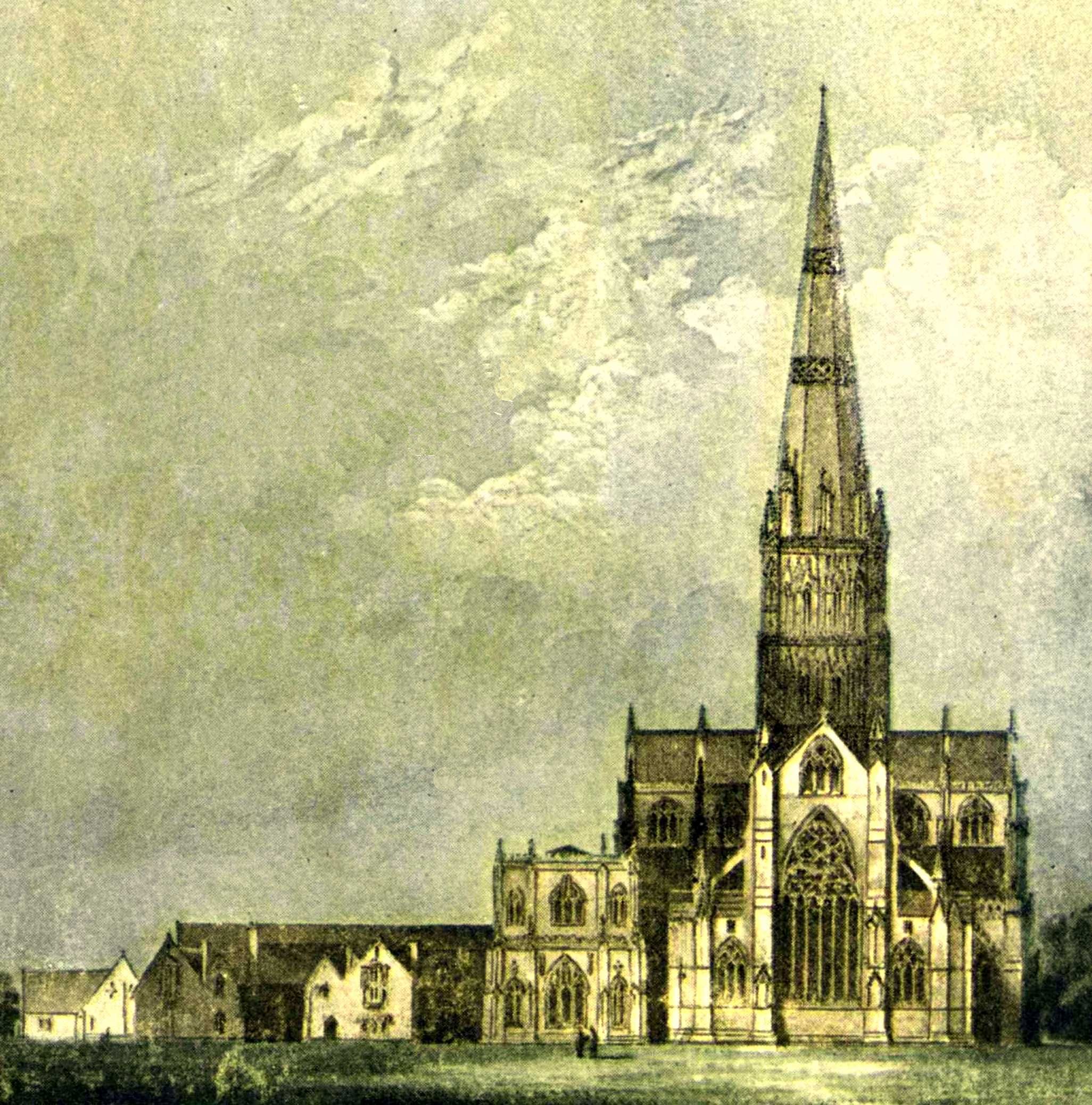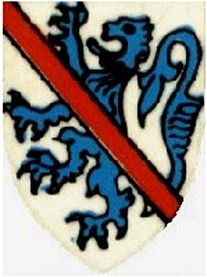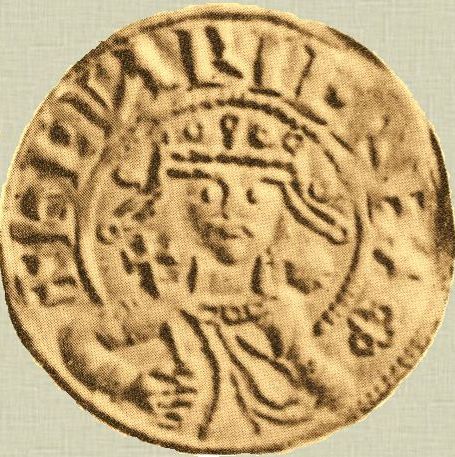1119
GUISBOROUGH PRIORY BUILT –
Robert De Brus of Skelton Castle granted land to the Canons Regular of St Augustine for the building of Guisborough Priory.
Robert’s brother, William, became the first Abbot.

Robert also granted to the Priory:-
The Manors of Guisborough, Kirkleatham, part of Coatham and areas corresponding to the present day Guisborough and Commondale moors.
10 churches in Yorkshire and Durham with their lands were presented to the priory which gave the prior the right to collect the Tithes.
[A “tithe” meant a tenth part and was in those days like a Tax paid to the Church in kind, usually a 10th of a parishioner’s agricultural production.]
The black cloaked Augustinian Order took over responsibility for local churches in the area, including Skelton’s. Robert, it is said, was urged into his generosity by the Archbishop Thurstan of York and the Pope Calixtus II [1119-1124].
People believed in these times that after death the soul entered “Purgatory” to suffer and to be cleansed of the sins committed in life.
Gifts to God and the prayers of holy men were thought to reduce the suffering. By such beliefs some establishments of the Church would eventually become richer than the landowners who had donated to it, eventually creating the envy behind the Dissolution of the Monasteries in Henry VIII’s time.
The Charter of Guisborough Priory shows how the Norman held land only by virtue of fealty to the king:-
“I, Robert de Brus, and Agnes my wife, and Adam our son and heir, to the church of S Mary at Gyseburne, and to the brethren serving God there, in free, quiet and perpetual alms, with all the liberties, free customs and privileges which we possessed in them by the gift and grant of Henry, King of England”.

De Brus Lion
1120
HENRY’S SON DROWNED – Crossing from France to England, Henry I’s only son. William, was drowned in the wreck of the White Ship.
1124
DE BRUS SCOTTISH LINE – A Royal Charter granted Robert De Brus the Lordship of Annandale in Scotland.
This came about either because Robert De Brus, was a friend and supporter of David, the Scottish king or that his second son, also called Robert, married the heiress to Annandale. Thus began the chain of events which would see his direct successor, Robert the Bruce, take the throne of Scotland two hundred years later.

1126
Henry I had about 30 bastard children, [many of whom he married to French and Scots magnates for diplomatic reasons], but only one other legitimate child, his daughter Matilda.
He demanded that the Lords of the realm, including De Brus, swear an oath accepting her as the future Queen.
1135
DEATH OF HENRY I. The throne was claimed by Stephen, Henry’s nephew.
Many Norman lords, including De Brus of Skelton, went back on their word to support Matilda, believing a woman would be a weakness to the realm.
Also she was married to Geoffrey of Anjou, an area that bordered Normandy, and had always been a threat to their French possessions.
Stephen was crowned and this eventually caused a civil war in England.
1138
BATTLE OF THE STANDARD – David I, the King of Scotland, was Matilda’s Uncle and took up arms against Stephen, seeing the possibility of extending his own territory into England.
He invaded and laid waste Northumbria, committing gross atrocities wherever the Scots army went.
The English Chronicler, Richard of Hexham records:-
“an execrable army, more atrocious than the pagans, neither fearing God nor regarding man, spread desolation over the whole province and slaughtered everywhere people of either sex, of every age and rank, destroying, pillaging and burning towns, churches and houses.
Then (horrible to relate) they carried off, like so much booty, the noble matrons and chaste virgins, together with other women.
These naked, fettered, herded together; by whips and thongs they drove before them, goading them with their spears and other weapons.
This took place in other wars, but in this to a far greater extent.”
Thurstan, the Archbishop of York, declared a Holy war against this Scots army and it is said villages were emptied of men and boys joining the cause, as Parish Priests were ordered to call them out.
In August the Battle of the Standard was fought at Cowton Moor, North of Northallerton, N Yorks.
Robert De Brus of Skelton Castle was a supporter of Stephen’s cause, but now he had even greater reason to fight as the Scots were threatening his own lands.He was one of those who tried to mediate with David I and prevent bloodshed.
But the Battle of the Standard was fought and the Scots lost.
Their advance into England was halted, though they retained Northumbria and Cumbria for the rest of the civil war.
There is a story that Robert De Brus the younger, of Annandale, fought on the side of the Scots king and was taken prisoner by his own father, Robert De Brus of Skelton. According to the Chivalry of the time he was handed over to the king before being returned to his parents.
1141
DEATH OF ROBERT DE BRUS II He was buried in Guisborough Priory.
Excavations were made at the Priory “at the instigation of a noted antiquarian”, in the sixteenth century by the new owners of the land, the Chaloners. They acquired the Priory and miles of land around when it was apportioned after the dissolution of the monasteries.
A stone coffin was found.
A faded journalistic account gives the reason for assigning the remains to Robert de Brus II as:-
“the fact that if was usual for them to be placed behind the High Altar in the exact spot where they were found.
Owing to the stones which had laid on the top of the coffin having begun to fall in, it was decided to have them replaced, and, on their being removed, the stone coffin was found immediately underneath, filled with earth and bones, some of them being in a good state of preservation.
These were reverently moved and placed in a leaden casket, which was carefully sealed and on the lid the following inscription was stamped, beneath a small leaden cross:-
“Robert de Brus II, Founder of this Abbey, died 5th Ides 1141”
The new lord of Skelton was Robert’s eldest son, Adam, who was married to Agnes. They had a son, Adam and a daughter Agatha.
Agnes was the daughter of Stephen, the Earl of Albemarle, and the sister of William, called ‘Le gros’ under whom Adam had fought at the Battle of the Standard.
1143
DEATH OF ADAM DE BRUS of Skelton Castle, 2 years after inheriting. He was buried in Guisborough Priory and was succeeded by his son also called Adam.
1154
DEATH OF KING STEPHEN. Henry II, the son of Matilda, succeeded to the throne of England.

1163
Adam de Brus paid £16 in lieu of knight service in the Welsh wars.
1170
Adam de Brus II sat in the parliament of Henry II.
He owed the King 20 pounds for the debts of Aaron the Jew in Yorkshire.
Adam de Brus II made a gift of land to Guisborough Priory in the area between Guisborough and the present Commondale.
1172
Adam de Brus II married Ivetta, the daughter of William de Arches, Lord of Thorpe Arches near Wetherby.
They would have five sons, Peter, Roger, Richard, Simon and Hugh and a daughter Isabel.
By this marriage he acquired 7 “knight’s fees” in the West Riding of Yorkshire, held of the honor of Morbray, including Walton in the Ainsty and Thorparch.
[A “knights fee” was an area of land reckoned to be sufficient to provide a knight with a living and an ample number of men and horses to be able to serve for his over-Lord or the King in event of War.]
1173
Henry II’s 3 eldest sons rebelled.
Adam de Brus II remained loyal to the the King and was awarded with fees of Collingham and Bardesey in exchange for the Castle of Danby.
1174
Adam served in fighting against the Scots.
1176
Adam had to pay 100 pounds for having taken a roe-buck from Henry II’s forest.
1180
He was involved in the pillage of a Norwegian ship that had been wrecked on the Cleveland Coast.
1183
Robert de Brus, the second Lord of Annandale in Scotland was buried in Guisborough Priory.
his wife, Isabel, was the daughter of William the Lion, King of Scotland].
1184
The people of Hartlepool obtained from their Lord, Adam de Brus II a Charter granting them the same privileges or customs as the burgesses of Newcastle upon Tyne.
1185
Adam de Brus was with Henry II’s forces in NW England.
Lochlann, or Roland in French, the Lord of Galloway in SW Scotland was attempting to extend his territory by claiming the neighbouring lands of his cousin, who was in Henry’s protection.
The threatened invasion of Scotland brought about the submission of Roland at Carlisle.
Next Page – 1188 to 1216.
Previous Page – 1066 to 1119.
Contents Page.